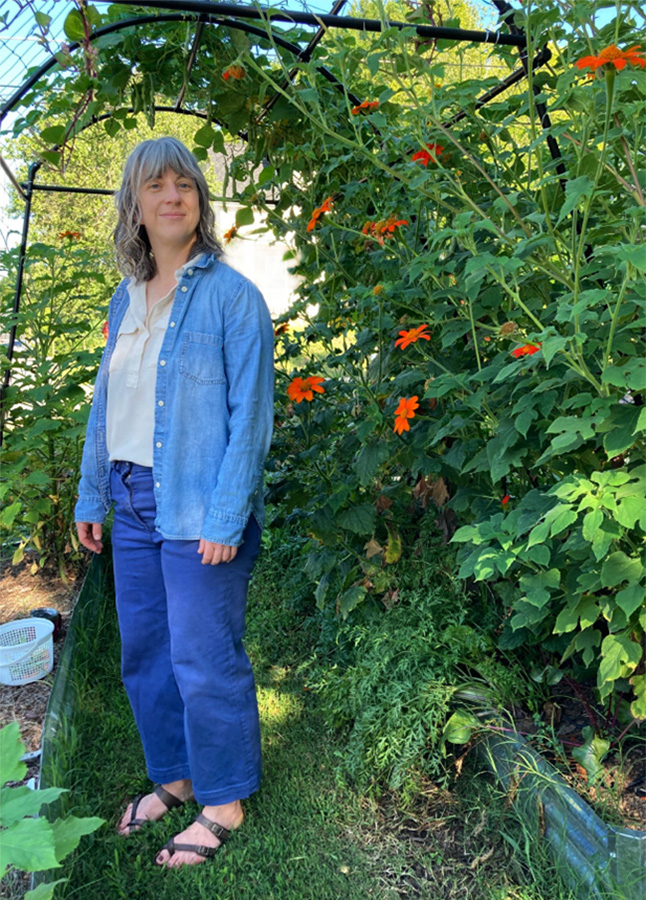Pastors and my garden plants could have a lot in common, to the benefit of the clergy.
This occurred to me recently when a denominational leader lamented that pastors feel they are unable to be vulnerable in denominational spaces. The denomination supervises too many elements of pastors’ professional lives for it to be a safe space for mental and spiritual health conversations.
No single organization can provide pastoral leaders with all of the support they need. Instead, pastors need a network of institutions committed in distinct but collaborative ways to their thriving.
As with clergy, my garden plants need more than a variety of components in their soil to grow; they need a network that shares these resources effectively and collaboratively. Front yard gardening — a high-maintenance and high-reward hobby — has provided me with a window into how plants network.
I didn’t set out to turn my entire front yard into a garden. I started with a 4-by-4-foot raised bed to grow some cherry tomatoes and basil. Seven years later, I have a yard filled with raised beds, grow bags and a perennial pollinator garden.
Vegetables, flowers and weeds comingle to produce food for my household, the birds, the squirrels and the bees. It’s chaotic and joy-creating for me while providing meaningful neighborly connections.
Slowly, over the years, my understanding of soil science has grown. Initially, I mixed bagged garden soil with homemade compost and declared it good enough. The plants grew as long as I remembered to water them and paid attention to pest and mildew problems.
Gradually, through gardening missteps and lackluster harvests, I began to learn about the complex needs of the many plants I attempt to grow. Dramatic plant failures have led me for advice to the local cooperative extension office help line more than once.
Carbon-rich soil feeds sugars and nutrients to plants and acts as a sponge, holding much-needed water for hydration. Mineral-dense soil provides potassium and phosphate. Bean and pea plants can pull nitrogen from the air (magic!), making crop rotation an essential part of successful gardening. And when the soil doesn’t have what the plants need, there is an entire cottage industry of soil amendments to help our green things grow.
But in between the compost and clay and the worms and grubs lives my favorite part of soil: the fungus. That white web uncovered in an overturned pile of mulch is garden gold, the mycelium network that acts as the fiber-optic communications channel for the plants.
Through these tiny strands, plants share resources and information with one another. The network also breaks down matter left by humans and other creatures, improving the soil’s quality and ability to support plant growth.
The importance of the mycelium’s invisible contribution to our daily well-being cannot be overstated. Working in my garden this spring to nurture the conditions for the mycelium to thrive, I have pondered how this network is a meaning-rich metaphor for pastors.
Each faith-based or church-related organization has a mission and strengths that define how it supports clergy, congregations and communities. It creates and provides a vital resource, but no single entity can offer all of the support needed for thriving communities and pastors.
We are more effective in our ministry when we understand our particular organization’s unique contributions to a thriving community — how we connect to other groups to support our people. This requires all of us to shed fears of economic scarcity and adopt a theology of abundance and collective wellness. It requires us to trust that a Creator God who has imagined a tiny fungal network into existence has imbued us with the capacities to share resources and wisdom needed to thrive together.
This eco-theological imagination complements Scripture’s many stories and metaphors that encourage us to think collaboratively about the work of being faithful in the world: the body of Christ, the sending of the 72, the formation of the diaconate in the early church. These biblical references bring meaning to local congregational and communal life, as well as the larger ecosystems surrounding pastors and faith communities. They, like the mycelium network, challenge us to share our resources and creativity with one another.
The economic realities of life in the 21st century require each of us at the personal and organizational level to ask hard questions about who we are, who we are not, and how we connect and share with others who have distinct offerings.
Our wealth is not financial; it is the relational trust we have with one another that we will not abandon one another, that we will show up to celebrate and support, to share and care. That is not to discount the need for fund development and viable economic models. Rather, the mycelium network challenges our culturally pervasive posture that economic thriving is a zero-sum game best won through resource hoarding.
The tiny, interconnecting strands of the mycelium reflect the sacred call to be in community with one another at every level of our life, work and ministry. This crucial network teaches us that we are not alone in growing thriving communities, congregations and ministers but live in a world full of living connections and relationships that make us healthier, stronger and more abundant.
The economic realities of life in the 21st century require each of us at the personal and organizational level to ask hard questions about who we are, who we are not, and how we connect and share with others who have distinct offerings.


















